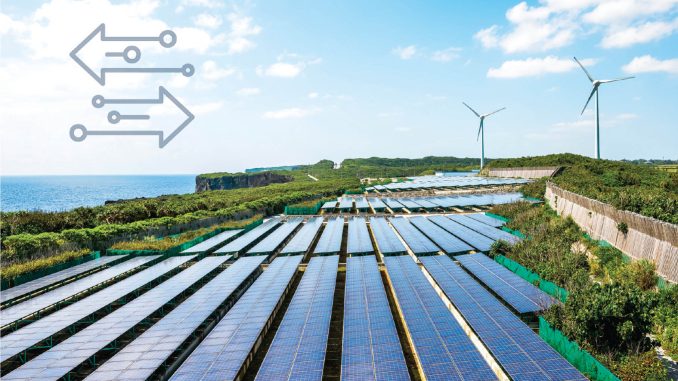
In a key development, NTPC Limited has closed the transactions for consolidating its renewable energy portfolio into one entity, NTPC Green Energy Limited (NGEL). This move aligns with NTPC’s plans to transfer its entire renewable energy portfolio and its existing stake in NTPC Renewable Energy Limited (NTPC REL) to NGEL and then dilute some of its stake in the company. Hence, rather than monetising specific assets, NTPC plans to sell some of its stake in the green energy company. To this end, it has proposed to offload 10-20 per cent of its stake. With this, NGEL will become NTPC’s green energy vehicle. The National Monetisation Pipeline has facilitated this consolidation as a means to monetise and unlock the value of the country’s assets. The asset monetisation will be undertaken either through an initial public offering or through a stake sale to strategic investors.
Transaction contours
 NTPC incorporated NGEL in April 2022 to consolidate its renewable energy businesses and pursue its green/sustainable energy venture. The scheme has been implemented as a part of the corporate business plan of the company, aimed at providing an impetus to its 60 GW renewable energy capacity target by 2031-32.
NTPC incorporated NGEL in April 2022 to consolidate its renewable energy businesses and pursue its green/sustainable energy venture. The scheme has been implemented as a part of the corporate business plan of the company, aimed at providing an impetus to its 60 GW renewable energy capacity target by 2031-32.
With this transaction, NTPC has transferred its renewable energy assets/entities to NGEL. The transaction comprises the transfer of 15 renewable energy assets through a business transfer agreement, and the transfer of 100 per cent equity shareholding of NTPC REL, a
wholly owned subsidiary of NTPC, through a share purchase agreement executed on July 8, 2022. The transaction has been carried out based on the book value of renewable energy assets and the paid-up equity share capital of NREL as of March 31, 2022.
Following the transfer, NGEL’s portfolio will have operational and under-implementation renewable energy projects aggregating 2,861 MW. These include 14 solar power projects of 2,811 MW and a wind power project of 50 MW. Of the 15 projects, 13 projects with a total capacity of 2,261 MW are fully operational, and the remaining two are partly operational, with 350 MW out of 600 MW currently operational, bringing the cumulative capacity to 2,611 MW. These 15 projects have firm power purchase agreements for 100 per cent of their capacities with state discoms and central public sector enterprises. Notably, NTPC REL has won tariff-based competitive contracts for 4 GW of capacity, and these projects are currently in advanced stages of implementation.
Recently, the Cabinet Committee on Economic Affairs (CCEA) granted NTPC an exemption to make an investment in NGEL. The CCEA also exempted NGEL’s investment in NTPC REL and its other joint ventures/subsidiaries, subject to a ceiling of 15 per cent of its net worth in addition to the monetary ceiling of Rs 50 billion to Rs 75 billion.
The road ahead
 In line with its commitment at COP26, India is following a low-carbon emission path to meet its development goals. The country aims to reach 500 GW of non-fossil energy capacity by 2030. As a leading power utility of the country, NTPC aims to add renewable energy capacity to help the country achieve this target and work towards its larger goal of achieving net zero emissions by 2070. The move will improve India’s global image as a green economy by reducing the country’s dependence on conventional sources of energy, diversifying India’s energy generation, reducing the coal import bill and ensuring 24×7 power supply across the country.
In line with its commitment at COP26, India is following a low-carbon emission path to meet its development goals. The country aims to reach 500 GW of non-fossil energy capacity by 2030. As a leading power utility of the country, NTPC aims to add renewable energy capacity to help the country achieve this target and work towards its larger goal of achieving net zero emissions by 2070. The move will improve India’s global image as a green economy by reducing the country’s dependence on conventional sources of energy, diversifying India’s energy generation, reducing the coal import bill and ensuring 24×7 power supply across the country.
NGEL aims to lead NTPC’s renewable energy journey by rapidly increasing its operational capacity to approximately 12 GW by 2024-25 on a consolidated basis and scaling up to 60 GW by 2031-32. NGEL plans to expand capacity through both the organic and inorganic routes while NTPC REL will be used exclusively for organic growth. NTPC plans to expand its renewables portfolio by participating in competitive bidding and pursuing emerging opportunities in the green energy business. NGEL will undertake other green energy businesses including green hydrogen/ammonia, joint ventures with other PSUs and bilateral arrangements with commercial and industrial entities.



